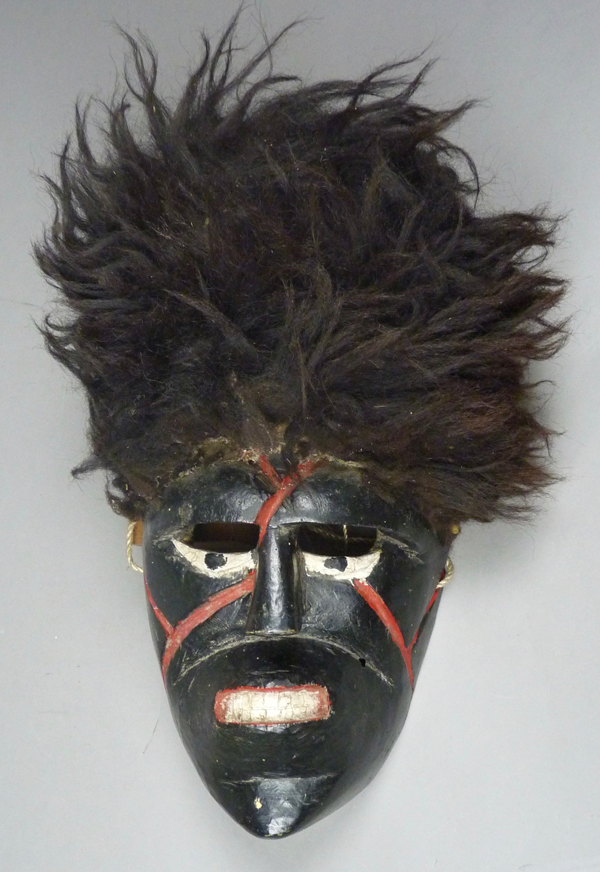In The Eye of the Sun:Mexican fiestas, published in 1997, there is a nice photo of masked dancers performing the Danza de los Chivos (goats) in Zitlala, Guerrero. Such photos are otherwise uncommon in mask books, but increasingly available on the Internet. Today I will show two Chivo masks. Each is unusual for having horns painted or carved in relief on the mask plus a long sisal headress with an attached pair of goat horns—two sets of horns.
A YouTube™ video of Chivos from Quechultenango, a town near Tixtla and Mochitlán, reveals a variety of characters, including Chivos with horned headdresses but also Diablas or Diablitas (female devils) wearing the same headdresses with horns (see discussion of Diablas in my post of December 4, 2017). So, dances which I had regarded as centering on Diablas are at least sometimes actually named for the Chivos, who may be Diablos called by another name?
https://www.youtube.com/watch?v=i3_BKwwQzj0
Here is another video, apparently also from Quechultenago. Several of these dancers are wearing Chivo masks with horns along with a sisal headdress with a second set of horns.
https://www.youtube.com/watch?v=VbhKWH7nEJ4
This third link is from Zitlala. These Chivos have prominent horns on their headdresses while they lack representations of horns on their masks.
https://www.youtube.com/watch?v=X2TP5eN_Iqg
Here is the first of these mask/headdress combinations. (231). I bought this mask from John Kania and Joe Ferrin of Santa Fe in 1994. It was said to be from Tlapehuala, Guerrero.










